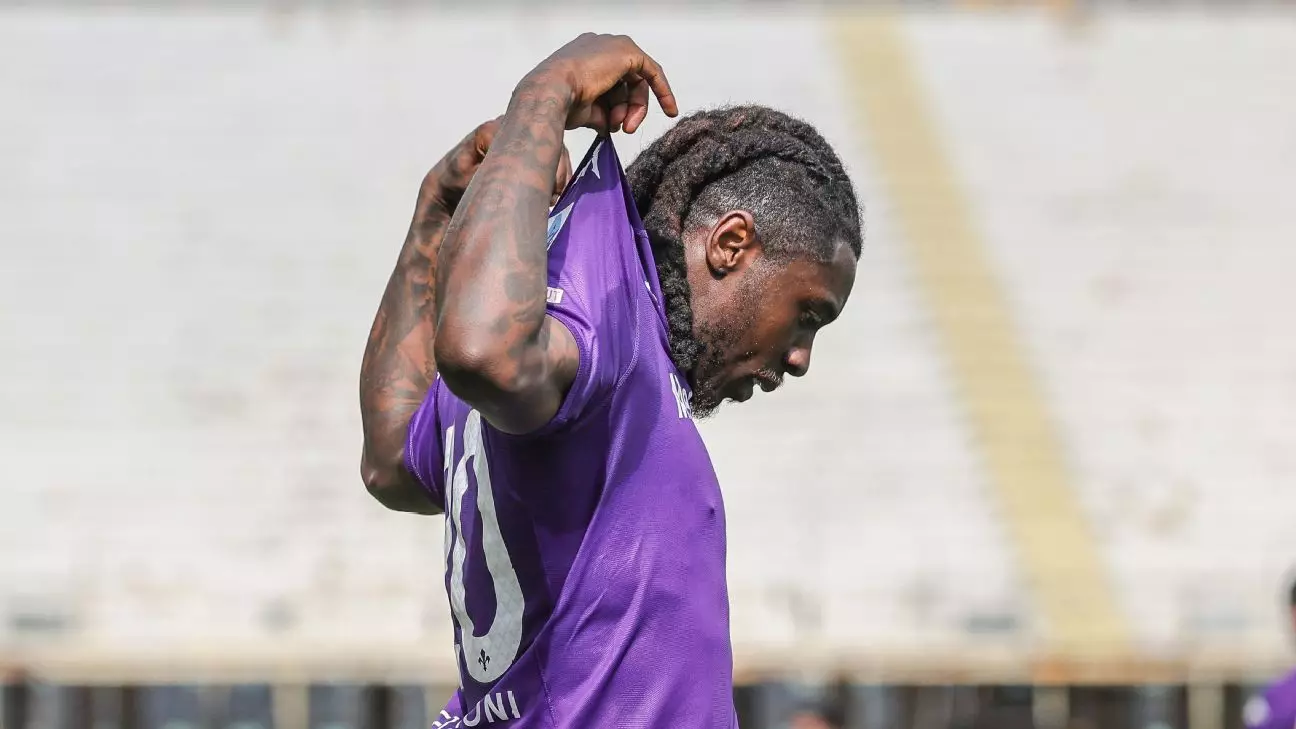With the summer transfer window remaining a focal point for clubs across Europe, the chatter around potential signings and departures continues to swirl. As we delve into the evolving dynamics of international football, it becomes clear that the tactics employed by clubs are more nuanced than they appear at first glance. This discussion will explore recent transfer movements, the impact of financial influences, and the choices players face in a market filled with opportunities and challenges.
The Arsenal Quandary: A Shifting Focus
Arsenal is at a critical juncture as they consider moving away from their initial pursuit of Slovenian striker Benjamin Sesko, who currently plies his trade with RB Leipzig. This decision follows the revelation of significant wage demands that the club appears reluctant to meet. Mikel Arteta is navigating the complexities of acquiring a prolific forward to bolster his attacking options, but the stalling negotiations signify a more profound hesitation. In sports, particularly football, financial prudence is as critical as performance on the pitch. Arsenal’s pivot toward other options, such as Sporting CP’s Viktor Gyökeres, could signify a strategic mindset aimed at both enhancing the squad and maintaining financial stability.
The discussions surrounding Sesko reveal a larger truth within transfer markets: the balance between ambition and fiscal responsibility is delicate. Arsenal may have set their sights on premier talent, yet their decision to step back makes a strong statement about the importance of setting boundaries in player negotiations. When the stakes are high, clubs must weigh potential rewards against risks, a theme echoed across Europe.
Manchester United and the Hunt for Firepower
Meanwhile, Manchester United’s pursuit of Fiorentina forward Moise Kean highlights their urgent need for goal-scoring talent. Kean’s impressive record of 25 goals in 44 matches this past season showcases his revival after struggling in previous spells, but questions linger about his past inconsistencies. For United, grappling with their attacking deficiencies, considering a player like Kean reflects a mix of desperation and strategic recalibration.
However, Kean’s situation is emblematic of a broader concern regarding players who have faced challenges in adapting to the rigors of top-flight football. His previous stint at Everton raises eyebrows, as it almost acts as a cautionary tale. In assembling new talent, teams must balance historical performance data with an eye on future potential, a juggling act that is part art, part science.
United’s approach also invites speculation about their broader intentions in the transfer market, especially as they assess alternatives within a tight budget. After missing out on other targets, the Red Devils appear to be leveraging interest from Saudi clubs to pressure Kean into making a decision, which could illustrate the lengths clubs will go to secure their desired players.
Italian Exchange: AC Milan’s Boldness
AC Milan’s willingness to consider offers for key player Rafael Leão epitomizes a competitive marketplace striving for financial leverage. While the Rossoneri demand a hefty fee, their readiness to negotiate underscores an understanding of the relentless nature of contemporary football finance. With clubs like Bayern Munich hovering, it’s clear that the stakes are high, and Milan must be prepared to capitalize on any opportunity.
In contrast, the reaffirmation of other players like Christian Pulisic staying put reflects stabilizing forces in a turbulent transfer environment. Milan’s ability to retain certain talents will likely be crucial as they seek to maintain momentum in both Serie A and European competitions.
Under the Radar: The Battle for Tactical Depth
The off-pitch maneuvering extends down to clubs like Napoli, who are evaluating their options with Darwin Núñez and other striker pursuits. Such discussions illustrate the juggling act clubs face in reinforcing squads while managing existing talent. The cross-current of interest—from potential departures to incoming stars—creates a vacuum of uncertainty.
Similarly, Newcastle United’s interest in Atalanta’s Giorgio Scalvini outlines the Premier League’s eagerness to cultivate young talent, even amidst concerns over injury history. It illustrates a broader trend as clubs are willing to bet on potential rather than existing performance metrics, a risk that could lead to sizeable rewards or painful pitfalls.
As clubs like Chelsea explore their own options with young prospects, the competition remains fierce at every level. The quest for young, inexpensive talent often leads to a race against time as clubs seek to develop the next generation while contending with financial realities.
Closing Thoughts on the Transfer Market’s Evolution
The current transfer window reveals a deeper dialogue about ambition versus responsibility in football. The shifting allegiances and evolving aspirations tell a story not just about player capabilities, but about clubs positioning themselves within an increasingly competitive landscape. As negotiations unfold and strategies materialize, the true test will be not just on the pitch, but in how these decisions resonate in the long term—both financially and competitively.

